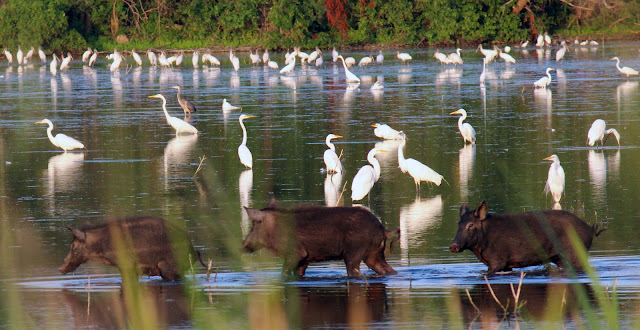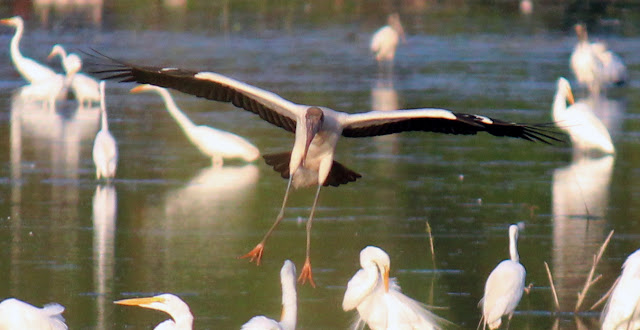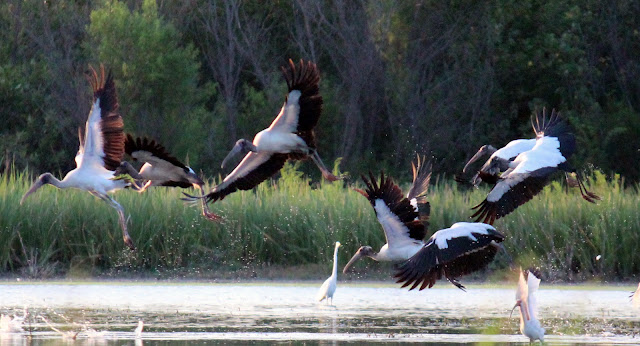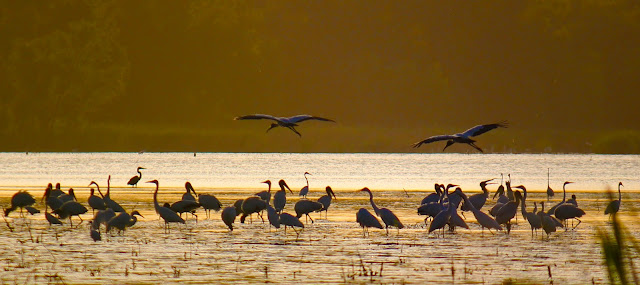 Where the wild things are. A special place that for a few weeks serves as a backdrop that I'm not sure even an African safari could rival. These are scenes that had me shaking my head, amazed to see firsthand. To see different wild animals coexisting on some base level in the same body of water is not something I had ever seen before in the Great Trinity Forest. Throw in the fact that these scenes are all a five minute drive from Downtown Dallas, inside the city limits of Dallas and feature some very aggressive feral pigs and rare birds...makes it super exceptional to see.
Where the wild things are. A special place that for a few weeks serves as a backdrop that I'm not sure even an African safari could rival. These are scenes that had me shaking my head, amazed to see firsthand. To see different wild animals coexisting on some base level in the same body of water is not something I had ever seen before in the Great Trinity Forest. Throw in the fact that these scenes are all a five minute drive from Downtown Dallas, inside the city limits of Dallas and feature some very aggressive feral pigs and rare birds...makes it super exceptional to see. |
| Feral Hog Wading Across Lake in Dallas Texas evening of July 3, 2012 |
The birds you see in the far background of the video that take flight are all Wood Storks. Numbering over 150+ that evening it was a spectacular sight. Previously an endangered species in the United States and mainly a bird of the coast, a sighting of just one is a rare event. Over 100 is just not heard of. Unless you are in the Great Trinity Forest. Of course!
Hard to tell the height and weight of the pigs. The Great White Egrets seen in the photos and video average 31-41 inches in height according to the Audubon Field Guide. The pigs are roughly somewhere in that range. I would guess given their similar coloring and weight that they are either siblings or the sow is the mother with the other two being full grown juvenile pigs.
Watching the pigs cross, I see a similarity in their venture across the lake in the same way 3 humans would cross. Everyone follows the lead pig, you look around the whole time being a little vulnerable, you stick close. As you approach the shore your pace quickens and when you get across you breathe a sigh of relief. I guess the pigs had somewhere to be since they wasted no time entering the grass on the other side.
The Pigs Don't Belong
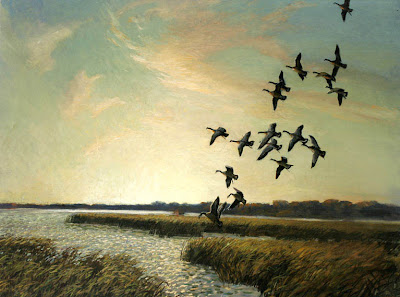 |
| Reveau Bassett's 1953 painting of the same lake |
 |
| Reveau Bassett |
 |
| :Lemmon Lake July 2012 |
One of the very real dangers in going to a place like this is encountering large animals on their own turf. This was the same spot a couple weeks ago where a pack of coyotes wander up to see what I was doing. It's their house, their playground and not mine. A three pig sounder or an overprotective sow with piglets could really ruin someone's day in high grass like that. Pigs often bed down in the high grass and cool mud to escape the heat of the day. I have come across pigs sound asleep like this and when awakened are like sticks of lit dynamite in the anger department.
I think it would be a great idea to allow responsible private individuals to hunt out the pig population down here. There are many citizens who are experts at discreet hog hunting with silenced firearms and would jump at the chance to rid the Great Trinity Forest of these pests.
Wood Storks
Once listed as an Endangered Species in the United States, the birds are given threatened status in Texas. The Endangered listing applied to Wood Storks who live and breed east of the Mississippi in the Deep South and Florida. Wood Storks are still afforded a Protected Status here in Texas. Wood Storks were once hunted for their feathers and have also lost much of their habitat to swamp draining in Florida. In Texas, the Wood Storks migrate north in the early summer from Mexico to take advantage of drying lake beds and the abundance of fish found in them. There have been only a handful of sightings in the DFW area of Wood Storks. Lemmon Lake is special in that so many can be seen at one time. Wood Stork sightings are more numerous further to the south in the Houston and Corpus Christi areas where the habitat lends itself to Wood Stork feeding tactics.
Wood Storks Are Big Birds
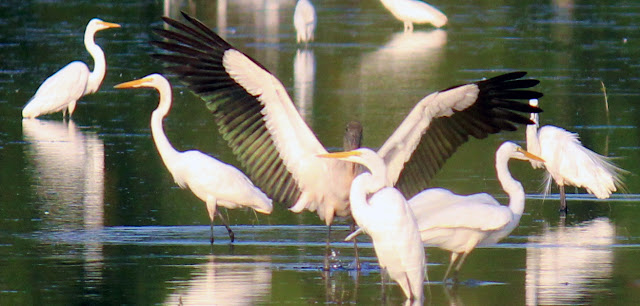 |
| Large wingspan of Wood Stork compared to Great White Egret |
Video of a Wood Stork flock feeding at Lemmon Lake
Roseate Spoonbills
Roseate Spoonbills are skittish. Hard to approach and sneak up on I don't have much luck getting close to them.
Other than a few long shots and accidental flushing out through the grass I have not had much luck.
Roseate Spoonbills can be seen infrequently in the shallow drying ponds and swamps in the Great Trinity Forest. Spoonbills are traditionally coastal birds and are a regular site along the Texas Gulf Coast. Rare to see them hundreds of miles inland in not only a prairie but also a densely populated urban environment.
This species feeds in shallow fresh or coastal waters by swinging its bill from side to side as it steadily walks through the water, often in groups. It feeds on crawfish, water beetles, tadpoles, insect larvae and very small fish other wading birds ignore.
Roseate Spoonbills and Wood Storks in flight together
Price of Admission
The barriers to entry to experience this place are high. I don't recommend a visit unless you are very well versed in outdoor skills and have a broad sense of personal safety. Just to get a glimpse of the lake requires a tough slog through willow swamp followed by hard hike through 8-10 foot high sawgrass. Any loud movements or noise will spook all the birds. Venomous snakes are always underfoot and snakeproof chaps are a must. The Wood Storks are not always at the lake. They puddle jump between this lake and other small lakes that dot the area between I-20 and US 175. Instead, I would encourage a recon from the Loop 12 bridge over the Trinity River looking north into a grove of high Cottonwood trees that line the river. The past two years Wood Storks have roosted there and would afford a better and much safer viewing.
